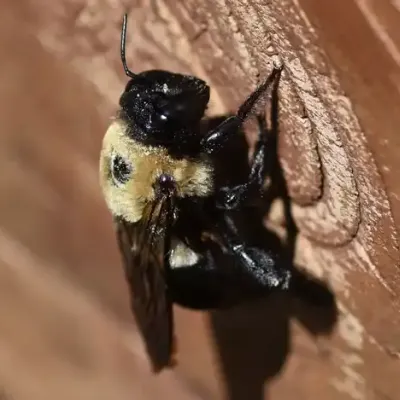About Carpenter Bees

Appearance: Black in color with a hairy yellow, almost light brown upper section; large body, no visible hairs on abdomen, metallic appearance; 1/4 – 1 inch in length
Region: Found throughout the U.S.
Diet: Despite their name, carpenter bees do not eat wood. Their diet consists of nectar and pollen.
Habitat: Carpenter bees do not live in nests or colonies like other bees because they are solitary, instead they bore deep holes into decaying or weathered wood to deposit eggs inside. Due to intense labor, they often reuse already existing galleries or may excavate new galleries to inhabit.
Threats: Female carpenter bees can sting but typically won’t unless provoked or bothered. While males appear aggressive, they do not have a stinger. Over time, carpenter bees can increase their gallery size, causing noticeable damage to wood.
Control: Seasonal maintenance on wooden structures, inspecting wood on the property for signs of carpenter bees such as round, smooth holes. To ensure bees do not enter your home, make sure screens on windows and doors are fitted, and seal cracks and crevices with caulk. You can also apply paint or varnish to wood to help deter them.
